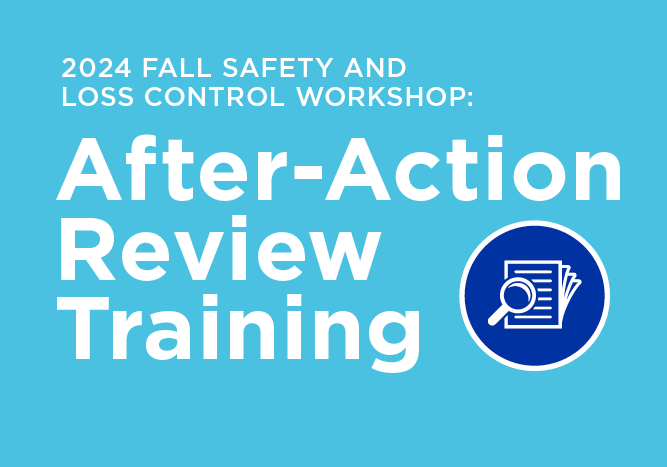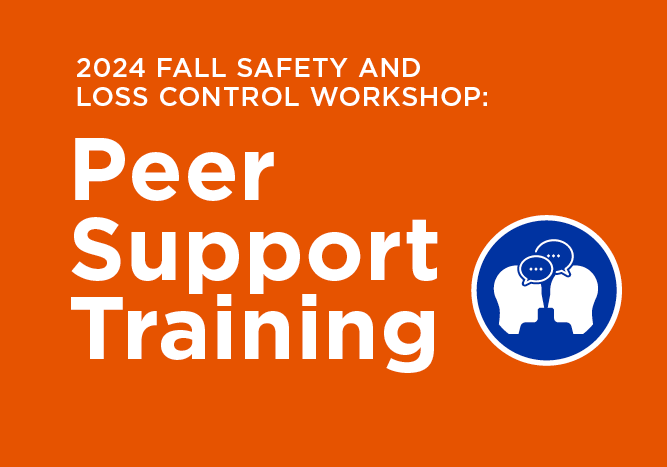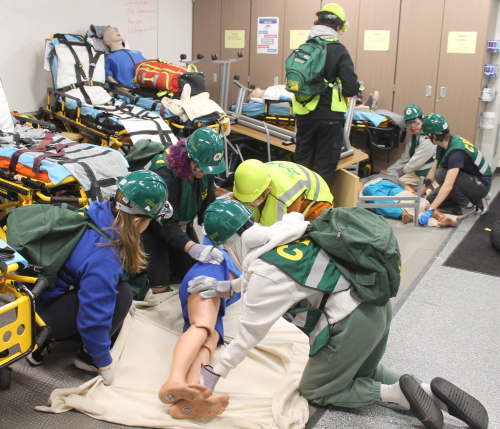The new public safety duty disability law requires treatment of a psychological condition for a licensed peace officer or full-time firefighter to be eligible for duty disability benefits from the Minnesota State Retirement System (MSRS) or the Public Employees Retirement Association (PERA). The law also:
- Modifies vesting, total and permanent disability benefits, and disability reemployment offset requirements for PERA’s Police and Fire (PERA-P&F) Plan.
- Implements new pre-service and in-service wellness training requirements and makes wellness training a prerequisite for peace officer licensing.
- Allocates a one-time total of $104 million for PERA and MSRS psychological treatment administration and Minnesota Department of Public Safety (DPS) payments to public employers through the modified Public Safety Officers Benefit account.
- Places limits on psychological fitness-for-duty exams, which may have implications beyond this statute.
Learn more:
- Read the new duty disability law, 2023 Session Law Chapter 48
- Read more about the new law in the article, “Focus on New Laws: Public Safety Duty Disability”
- Read more about funding for public safety in the article, “Focus on New Laws: Public Safety Aid”
Get answers to FAQs regarding the new law on public safety duty disability
The following frequently asked questions (FAQs) aim to provide information to cities about the new law to assist local governments in making decisions related to the law change. The League will continue to update this information as necessary. These FAQs may not address all the questions that we received from members, but we will provide answers as they become available.
General information
-
What does the new public safety duty disability law do?
The law has several key provisions and funding aimed at preventing psychological injury and providing treatment for public safety personnel. The key changes can be placed into four main categories.
- One-time allocation of $104 million for PERA and MSRS psychological treatment administration and DPS training implementation and employer reimbursement.
- Modified pension vesting schedule and changes to disability benefit application requirements, limitations to benefit payments, and new offset provisions.
- New pre-service and in-service wellness training requirements for peace officers.
- New psychological condition treatment provision, which requires officers to complete up to 24-32 weeks of treatment to be eligible to apply for duty disability benefits. Employers must pay treatment costs not covered by health insurance, and continue paying officer’s salary and benefits, during the treatment period. Employers have the opportunity to seek full reimbursement annually from DPS.
The law changes affect peace officers and firefighters who are members of MSRS or PERA-P&F retirement plans. Generally, volunteer firefighters are not members of these plans unless they receive compensation from other public employment. The information provided below is specifically related to PERA-P&F members.
-
When does the law become effective?
The law went into effect on July 1, 2023.
Certain requirements of the law begin Jan. 1, 2024, Feb. 1, 2024, and July 1, 2024; see the following question for more information.
-
What new requirements does the law impose and when do cities need to comply?
- Beginning Jan. 1, 2024, to be eligible for reimbursement, employers must provide either an annual wellness training (which incorporates the learning objectives established by the POST Board) or an employee assistance program (EAP) or peer support group for peace officers and firefighters.
- Beginning Feb. 1, 2024, the Minnesota Firefighter Initiative (MnFIRE) must implement a wellness training program for firefighters.
- Beginning July 1, 2024, cities must provide in-service training to every licensed peace officer (full- and part-time) employed by the agency. This is a separate training requirement from the reimbursement requirement and is specific to licensed peace officers. Training must comply with learning objectives developed and approved by the Peace Officer Standards and Training (POST) Board and meet Board requirements for Board-approved education credit. Cities must maintain written records of their compliance with the requirements and make them available for periodic review by the Board upon request.
Peace officers with renewal dates after June 30, 2024, are not required to complete training until the officer’s next three-year licensing cycle.
Cities may utilize the one-time public safety aid received from the state to fund their wellness training programs.
-
How does this new law affect our city’s police and fire departments?
- Requires PERA-P&F members (police officers and full-time firefighters) to receive treatment for psychological conditions in order to be eligible to apply for duty disability benefits. Peace officers or firefighters with a physical and mental injury (dual diagnosis) are not required to receive psychological treatment, but they may.
- Establishes salary and benefit continuation for a peace officer or firefighter while they receive treatment for mental health conditions. Officers will stay on payroll and continue to receive service credit while seeking treatment, appealing a treatment determination, and receiving treatment.
- Peace officers and firefighters may resume light-duty work during their treatment, if approved by a mental health provider and approved by the employer. Other laws, such as the Americans with Disabilities Act (ADA) and Minnesota Human Rights Act (MHRA), may obligate employers to provide light-duty work.
- Upon completion of treatment, peace officers and firefighters deemed medically able to return to full-time work in work in the position they held prior to treatment or a comparable position (one that provides salary and employer-provided benefits equal to or greater than their position) are generally presumed fit for duty and ineligible for duty disability.
- The learning objectives developed by the POST Board must be incorporated into the required curriculum of professional peace officer education programs. A person is not eligible to take the peace officer licensing examination after July 1, 2024, unless they have received this training.
- Beginning July 1, 2024, every local and state law enforcement agency must provide in-service wellness training to every full- and part-time peace officer employed by the agency. The training must comply with the learning objectives developed and approved by the POST Board and must meet Board requirements for Board-approved continuing education credit.
- Peace officers with a license renewal date after June 30, 2024, are not required to complete this training until the officer’s next full three-year licensing cycle.
- The head of each local and state law enforcement agency shall maintain records of the agency’s compliance with the in-service training requirements. Written records are subject to periodic review by the POST Board and available upon request.
New wellness training for firefighters will be implemented by Feb. 1, 2024, by the Minnesota Firefighter Initiative (MnFIRE). Providing this training will satisfy a city’s wellness training or EAP/peer support requirement for reimbursement as it relates to firefighters. Training programs established by the Hometown Heroes Assistance Program will also satisfy this requirement.
-
Does this law provide any new job protections to peace officers?
- A peace officer or firefighter may return to work full-time or part-time in the position they held, or another vacant full-time position with the employer that provides salary and benefits equal to or greater than those of the position they held prior to treatment, upon completion of treatment or earlier, so long as their mental health professional has determined they are medically able to do so.
- An employee may return to full-time or light-duty assignments prior to completion of treatment, subject to availability of a position, if deemed appropriate by their mental health professional and with the employer’s approval.
-
What should our city do to prepare for this new law to be implemented?
Cities should immediately designate a disability contact person and designate them in the Employer Reporting and Information System (ERIS). See the PERA December 2021 Employer Newsletter (pdf) for instructions on designating your disability contact person. At this time, only one person can be designated, so cities must be vigilant to update their contact person as necessary.
Review and revise the job descriptions for all of your current public safety personnel. Having job descriptions updated and readily available will be helpful if an employee requests psychological treatment, as PERA will request this information from employers and it is key in determining whether the employee can safely perform the job.
Cities should continue an existing employee assistance program (EAP) and/or peer support program or consider implementing one. Annual enrollment season is a great time to implement these programs. For more information, see the League of Minnesota Cities PTSD and Mental Health Toolkit and Peer Support Standards and Training Guidelines.
Treatment and salary and benefits continuation
-
How will cities be informed if a peace officer or firefighter has applied for treatment?
- An employee must apply for treatment approval under this new law directly to PERA using the application form it has developed.
- PERA will initiate contact regarding requirements and forms related to treatment.
- Once PERA receives an employee’s application for psychological condition treatment they will notify the city’s designated disability contact electronically and by mail within six days of receipt.
- Employers must then provide PERA, within five business days of receipt of notice, with the dates the employee was on duty in a position covered under the plan. It is essential that cities respond to PERA as soon as possible.
For more information, review PERA’s Disability Benefits webpage
-
Who chooses which mental health professional will conduct the treatment?
It is up to the individual employee to select their mental health professional and there is no list of providers to choose from. “Mental health professional” means a person who is qualified under Minnesota Statutes, section 245I.04, subdivision 2.
-
Can the city require proof that the officer is seeking treatment for a psychological condition?
Generally, this law does not expand the power of cities to obtain medical or other information on their employees – privacy protections still apply under laws such as Americans with Disabilities Act (ADA), Minnesota Human Rights Act (MHRA), Family and Medical Leave Act (FMLA), and the Minnesota Government Data Practices Act (MGDPA).
If cities wish to obtain treatment information directly from employees and/or from medical providers, they may ask employees to sign a release of information, however, employees are not obligated to sign such a release. See the LMC model form Informed Consent for Release of Information (doc). For data privacy reasons, PERA will not provide this or other related information to employers.
An employee will not be penalized for an interruption in active and consecutive treatment, so long as the employee did not intentionally cause or initiate the interruption. The treating mental health provider must assess the employee’s treatment progress monthly and at the end of their treatment and report back to PERA. Upon completion of the employee’s treatment, if the employee’s mental health provider determines the employee cannot return to work, the employee may apply for a PERA duty disability. PERA will make the determination of whether the employee is eligible for duty disability benefits due to a psychological condition based on the provider’s report and/or any required fitness-for-duty exam.
-
What happens after the psychological treatment is complete?
Throughout treatment, PERA will request that the treating mental health professional complete monthly reports regarding the officer’s progress in treatment. At the completion of 24 weeks of treatment, PERA will ask the officer and their mental health professional to complete the PERA Psychological Condition Treatment Report.
At the end of the 24 weeks, the treating mental health professional will indicate whether:
- Eight additional weeks of treatment could help the officer return to work in the position they held on the date of injury, event, or onset of the mental illness;
- The member is able to work in a comparable position with the employer; or,
- The treatment is complete and the officer’s condition prevents them from performing the normal duties of a peace officer/firefighter and prevents them from returning to work with their employer.
Based on the mental health professional’s recommendations, PERA will decide on the next steps. PERA will either:
- Extend treatment an additional 8 weeks;
- Advise the member to contact their employer for available job opportunities in a comparable position; or,
- Assist the member in initiating a duty disability application by sending a disability packet containing estimate, application, and other disability information.
-
Does the law change a city’s ability to obtain an independent fitness-for-duty evaluation?
The new law affects a city’s ability to obtain a fitness-for-duty exam, mainly by placing some time requirements on these exams. The law’s rules for fitness-for-duty exams are different than the rules set by other laws, such as the Americans with Disabilities Act (ADA), Minnesota Human Rights Act (MHRA), and Family Medical Leave Act (FMLA).
Cities should be mindful that the new law’s restrictions could affect their ability to obtain and/or rely upon a fitness-for-duty exam outside of the PERA process, given that a city is often handling multiple issues and forums simultaneously. For these reasons, cities should work closely with their city attorneys and/or employment/labor law specialists to address these issues now and in the future (including when the paid family and medical leave law goes into effect).
Under the new law, an employer can request a fitness-for-duty exam for an employee who is cleared to return to work at full capacity or on light duty by a treating provider (and thereby presumed to be fit for duty) under these circumstances:
- The exam is completed within six weeks of the employer receiving the determination, and
- The report is completed within six weeks of the exam.
These limitations make it especially important to communicate with the fitness-for-duty evaluator about timelines. The employer and employee can agree to modify these time limits.
- If a fitness-for-duty provider determines an employee is not fit for duty, there are two options:
- The employee is presumed eligible for a duty disability (assuming other requirements are met), or
The employee can appeal and request another fitness-for-duty exam by one of the five providers listed on a specially created panel. (If the employee does not select a provider within 10 days, the employer gets to choose.) Panelists will be selected by mutual agreement of the League and other stakeholders, including the Association of Minnesota Counties and police and fire associations and labor groups. This fitness-for-duty evaluation is binding and not subject to appeal.
-
Does the city have to continue its contributions toward employee’s health insurance and pension while they are on leave?
Yes. While an employee is seeking or receiving psychological condition treatment, employers shall continue to pay the employee’s full salary and employer-paid benefits, including employer contributions to health care and retirement benefits.
Employers must also continue providing employee and dependent health insurance benefits provided at the time of the injury, event, or onset of the mental illness and any other benefits provided under their collective bargaining agreement.
Employees will also continue to receive service credits during their time away from work seeking treatment. Employers may apply for reimbursement from DPS annually by Aug. 1 for treatment costs and salary and benefit continuation costs incurred by the employer. See DPS Public Safety Office Benefit Programs website for forms and instructions.
-
How will the city apply for reimbursement for the costs associated with providing pay and benefits to an injured employee?
Employers may apply for reimbursement of treatment costs incurred by the employer and costs incurred to continue salary and benefits.
To be eligible for reimbursement of continued health, benefit, and treatment costs under Minnesota Statutes 299A.465, 352B.102 and 353.032, beginning Jan. 1, 2024, public employers must provide either:
- Annual wellness training to peace officers and firefighters that incorporates the learning objectives established by the POST Board/MnFIRE; or
- An employee assistance program (EAP) or peer support program.
Employers may apply for reimbursement annually by Aug. 1 for the preceding fiscal year. Access the instructions and forms to apply for reimbursement on the DPS website
The League of Minnesota Cities is working closely with DPS to determine what procedures will be required to request reimbursement.
Disability benefits changes
-
What changes have been made to disability benefits?
- The vesting schedule for PERA-P&F plan has been amended to a graded 10-year vesting for all current members and former members who have not yet started to receive retirement benefits.
- The total and permanent duty disability benefits have been modified to 99% of a member’s average salary, tax free. The benefit amount for regular duty disability benefit remains 60% of member’s average salary, tax free.
- Additional clarifications were made regarding optional annuity elections, regular disability benefits, and computation of total and permanent regular disability benefit computations.
-
What changes have been made to disability benefits payments?
Two offset provisions have been implemented related to re-employment earnings for PERA-P&F duty disability benefit recipients.
These offsets apply to members who begin disability payments or are required to reapply on or after July 1, 2023. Beginning the calendar year after application or reapplication disability benefits for recipients who resume gainful occupation with earnings will be reduced each year until normal requirement age by the sum of both offset calculations. The monthly disability benefit adjustment may not exceed the original benefit amount.
The two offset provisions include:
- Disability benefits for those with less than 20 years of service (duty disability) or 15 years (regular disability) will be reduced by the lesser amount of 50% of reemployment earnings or 11.8% of the member’s average salary times either 20 or 15 less the member’s years of service, divided by 55 less the member’s age at the time of disability. The purpose of this offset is to require members with less than 20 years of service to continue making employee contributions into the PERA P&F plan if they secure reemployment in a different position.
- An offset to help align the income between PERA P&F disability recipients and active members and align the offset process with other comparable plans. This offset applies to all disabled members when the sum of reemployment earnings and current disability benefit exceeds 100% of an active member’s salary in a similar position.
The amount of disability benefits will be reduced by $1 for every $2 by which the sum of reemployment earning and disability benefits is more than 100% and equal to or less than 125% of an active member’s salary in a comparable position. The amount of disability benefits will be reduced by an additional $1 for every $1 by which the sum of reemployment earning and disability benefits exceeds 125% of an active member’s salary in a comparable position.
-
Are there any reapplication requirements for disability benefits recipients?
The Legislature has codified the existing reapplication requirements that PERA has already been utilizing.
At the end of each year for the first five years, and at the end of every three years after, an individual receiving disability payments must reapply and provide proof of disability to PERA. PERA has the right to request proof of continued disability between reapplication periods.
The reapplication requirement may be waived if PERA receives a written statement from a medical provider that no improvement can be expected in the person’s disability condition.





